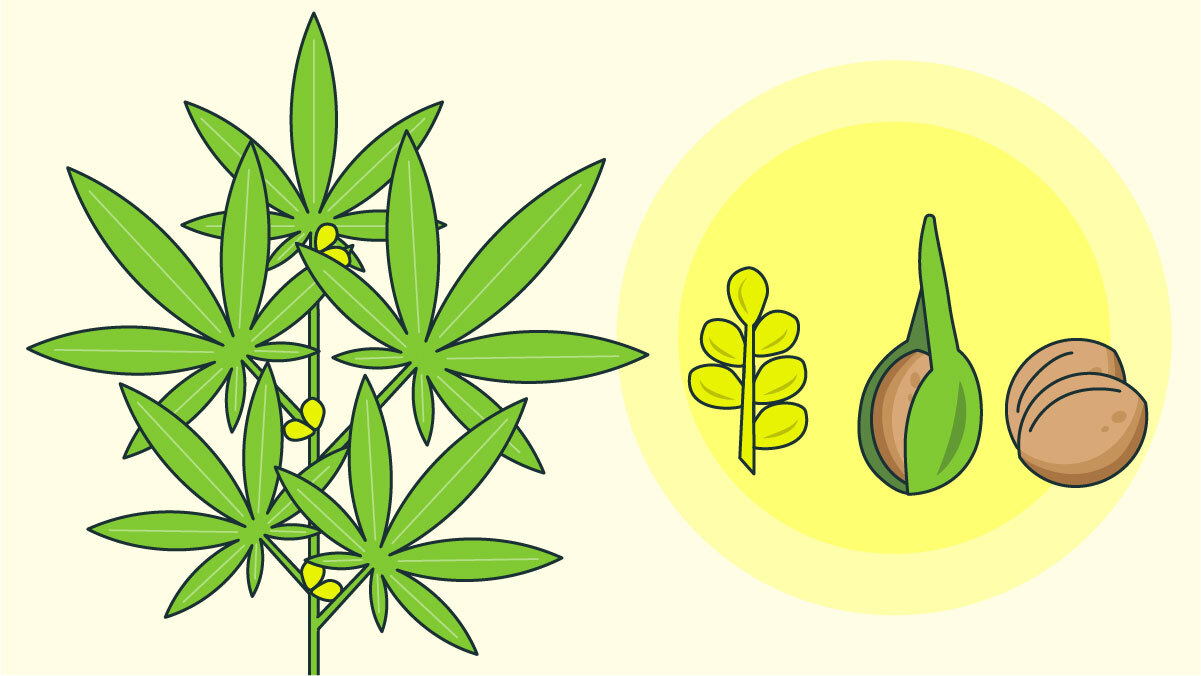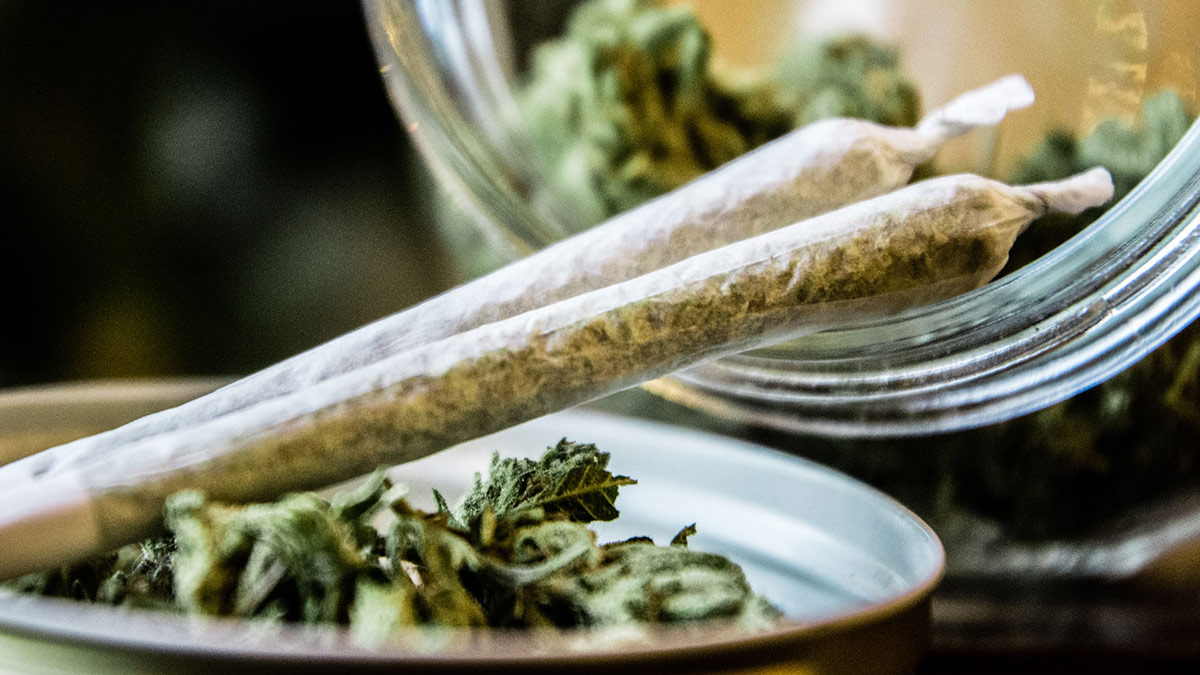What Parts of the Marijuana Plant Do You Smoke?

Those trying weed for the first time can be forgiven if they’re confused.
Tobacco (which is smoked, just like pot) is made from the dried and fermented leaves of the plant. The universal symbol for cannabis is a marijuana leaf.
Stoners reminisce about the most incredible flower they’ve smoked or the terrific bud they picked up over the weekend. And the phrase “stems and seeds” is commonly heard when the subject of the pot comes up.
So the newbie confusion is understandable. Exactly what part of weed do you smoke?
Here’s the short answer: you don’t normally use the leaves, stems, or seeds. Whether you’re smoking or vaping, the buds of the cannabis plant are the golden ticket.
Now, here’s the longer answer.
Important Parts Of The Marijuana Plants

Like most plants, cannabis plants have roots and stems which are vital for stability, and for transporting nutrients and fluids. We’re really not concerned with those because they’re not important once a crop has been harvested.
Two parts of the plant deserve more attention, the flowers, and the leaves.
Weed Flowers
The stuff you smoke is the flower of the cannabis plant, but there’s an important qualification. It’s actually the flower of the female cannabis plant. Why does that matter?
Naturally, there are both male and female marijuana plants. Females produce the types of buds and flowers you’d expect, but the flowers that males produce are simply small pollen sacs. When the males mature and those sacs open, they release pollen to fertilize female plants. That process, however, creates seeds in the females – and seeds aren’t smokable.
For that reason – and because females contain way more cannabinoids like THC – weed producers only want unfertilized female plants (known as sinsemilla). They remove all male plants from their grow as soon as their sex is identifiable. The males are only used for breeding, and to make cannabis byproducts like hash and oils.
Now, let’s talk about those unfertilized female flowers.
First of all, nature lovers might not call them “pretty.” They’re small and teardrop-shaped, covered with what might look like a layer of frost. That’s not really frost, of course; it’s a sticky resin that’s been secreted by the flower’s trichomes, which are also recognizable by their thin hairs designed to deter pests and predators.
Resin is the most potent product of the flower, and the trichomes are also responsible for creating the terpenes and flavonoids that determine much of the product’s flavor and aroma.
The most productive part of the cannabis plant is called the cola, a cluster of flowers that grow together in a tight group. A plant may have several colas near its lower branches, but the big one at the top, called the apical bud, is the one that really matters. It’s where the fruit of the grower’s labor is concentrated for harvesting.
Let’s pause for a minute to talk about weed vocabulary. You’re probably familiar with the botanical term “buds;” they’re what grow on the plant’s stem and eventually develop into flowers. It works that way with weed plants, too, but the terminology that’s commonly used isn’t as exact. Growers and users universally use the terms bud and flower interchangeably. That’s why you’ll hear people calling marijuana both “bud” and “flower” – they’re talking about the same thing.
There’s one other term whose meaning we can also clarify. You may have heard weed referred to as “sticky-icky” or something similar; that refers to the bountiful amounts of sticky resin that identify the most potent colas.
Weed Leaves
So what about those marijuana leaves that are so identifiable, both on plants and t-shirts? They’re important. In fact, there are two types of leaves on a cannabis plant.
The fan leaves are the big ones that, as you probably remember from high school, are crucial in the photosynthesis process. They extend far from the stems and are responsible for capturing sunlight, allowing the plant to use it (along with carbon dioxide and water) to create energy and oxygen. The plant needs fan leaves, but you don’t; they’re removed from the plant after harvesting because they contain very little of the “good stuff.”
Then there are smaller, dainty leaves known as sugar leaves. They grow intermixed with the plant’s flowers, so as you might expect, they’re covered with resin produced by nearby trichomes. That’s the reason they’re called “sugar” leaves.
You can harvest and smoke sugar leaves, but it’s not the most rewarding experience. They’re not as potent as the actual flower, and the smoke is quite harsh. There are two better options.
One is to simply leave the small leaves on the harvested buds. Many growers do this for a couple of reasons: the sugar leaves add to the weight of the flower they sell, and they make the weed look more potent because of the shiny resin that’s visible.
Other growers remove the sugar leaves because they’re less potent than the rest of the cola and the fully-trimmed flower looks “neater.” There’s a reward for the producers’ good deed, though. They can accumulate the sugar leaves and combine them with buds and trichomes that have been knocked off the plants (a mixture known as “trim”), to make other products.
Trim isn’t as potent as the plant’s flower, but when dried and concentrated, it’s strong enough to make edibles, hash or cannabis concentrates. Some producers also use the trim to make the pre-rolls that are sold in dispensaries.
The Bottom Line
That brings us to the more complicated answer we promised at the start.
In most cases, the part of weed that you smoke is the female cannabis plant’s cola, the collection of flowers also known as the buds. It’s the richest in cannabinoids (including THC), terpenes and flavonoids, largely thanks to the trichomes that develop on the flowers and produce pot’s trademark resin.
If you’re smoking high-quality weed, you won’t be smoking the plant’s leaves. However, the sugar leaves may be contained in pre-rolled joints, or they may have been used to make edibles, hash, or concentrates – and some poor-quality green may have a plentiful amount of leaves mixed in. That’s a major reason why nasty-sounding schwag has earned its richly-deserved nickname.
What Part of Weed Do You Smoke? FAQ
Q: Can you smoke any part of the male weed plant?
A: Yes, you can, but you probably won’t be thrilled with the result. The male plants do contain some THC, but not a lot; their “buds” only have about as much psychoactive power as sugar leaves from the female plant, and we’ve already explained why sugar leaves aren’t a great choice for smoking up.
Q: If you’re desperate, can you smoke the stems?
A: Bad idea. They contain little or no THC, but they do contain irritants that will make you cough and give you a sore throat. That’s why the term “stems and seeds” that we mentioned earlier is only used to refer to what’s in really crappy weed. Some people use stems when making edibles or topicals, but they’ll really just contribute taste or aroma, rather than getting you high.
Q: Are sativa and indica plants different?
A: They have the same basic physical characteristics, but they definitely grow differently. Indica plants are shorter, their stalks are “woodier,” and their leaves are darker than those on sativa plants. Indica flowers earlier and can flourish in colder weather, and they grow more buds. All of those differences contribute to the general differences in the effects they produce, but the real determinant is the weed’s strain – and since most strains are now are hybrids, you can’t tell much about the high your flower will produce by looking at the plant.